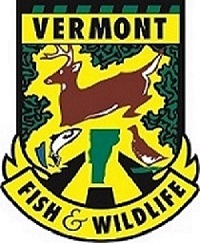
The Vermont Fish and Wildlife Department has confirmed the presence of Epizootic Hemorrhagic Disease (EHD) in Rutland County deer. EHD is a common viral disease of deer in North America but had never previously been confirmed in Vermont.
Current and suspected cases in Vermont have been localized in Castleton and West Haven, although they are likely related to more widespread outbreaks occurring in New York. The majority of Rutland County and the rest of Vermont appear not to have been affected by EHD.
Hunters may consider exploring new areas if their favorite hunting spot has been affected by EHD.
EHD outbreaks can temporarily lower deer numbers in a local area, but they do not have a significant long-term impact on regional deer abundance.
EHD virus is transmitted by biting midges, sometimes called no-see-ums. The disease is not spread from deer to deer and humans cannot be infected by deer or bites from midges. The department notes that deer harvested in these areas are safe to eat.
EHD occurs regularly in the southern states, so some southern deer have developed immunity. In the northeast, EHD outbreaks occur sporadically, and deer have no immunity to this virus. Consequently, most EHD-infected deer in the northeast are expected to die. The first hard frosts kill the midges that transmit the disease, ending the outbreak.
Deer that contract EHD usually die within 48 hours of showing clinical signs. Outbreaks are most common in the late summer and early fall when midges are abundant. Signs of EHD include fever, hemorrhage in the mouth or organs, and swelling of the head, neck, tongue, and lips. A deer infected with EHD may appear dehydrated and weak. Infected deer often seek out water sources and many succumb near water. Several sick or dead deer may be found in a small area, particularly around water. There is no treatment or means to prevent EHD. Dead deer do not serve as a source of infection for other animals.
Sightings of sick or dead deer should be reported to the Vermont Fish and Wildlife Department by contacting your local State Police dispatcher who will notify the nearest State Game Warden. The department will collect samples from deer for testing and track deer reports to monitor the extent of the outbreak and determine impacts on the deer population.
For more information on EHD, see the fact sheet from the Wildlife Futures Program or visit Cornell University's Wildlife Health Lab website.
For Immediate Release: October 11, 2021
Media Contacts: Nick Fortin 802-793-8777; David Sausville | 802-324-4206
